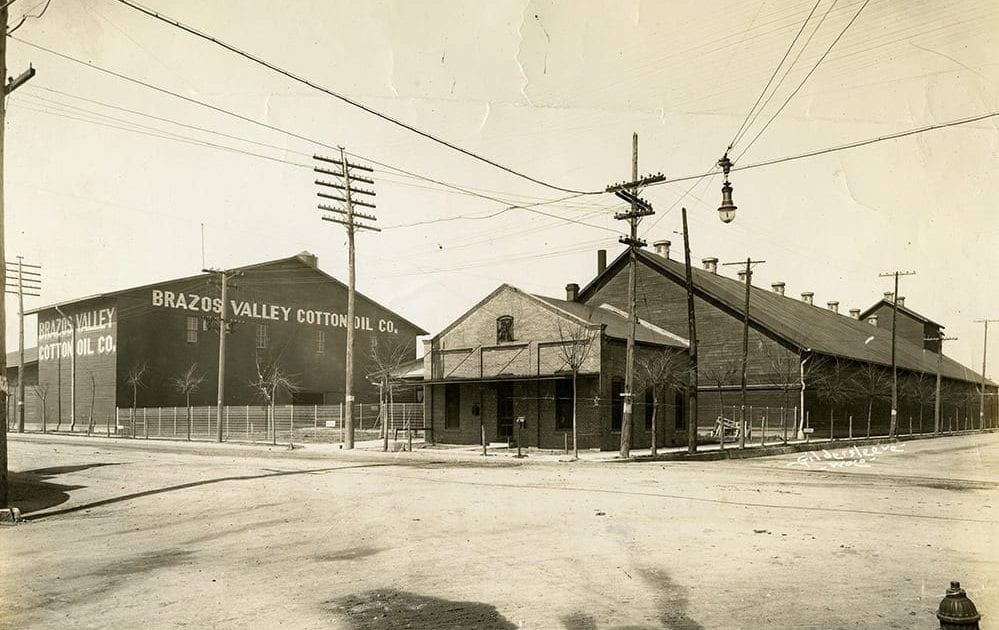By Geoff Hunt, Audio and Visual Curator, The Texas Collection, Baylor University.
Texas has changed quite a bit over the years, as is readily seen in our vast photograph and postcard collections. To help bring some of those changes to life, we’ve created a “Texas over Time” blog series that will illustrate the construction and renovations of buildings, street scenes, and more. Our collections are especially strong on Waco and Baylor images, but look for some views beyond the Heart of Texas, too.
“Then:” The old Samuel H. Clinton Grocer and Hardware store building on 600-602 Elm Street, Waco, TX., unknown photographer, circa 1900. General Photo File-Businesses-S. H. Clinton; “Now:” recent photo of same structure by G.H., 2020.
600 Elm Street, S.H. Clinton Grocer and Hardware Building
Sometimes an old structure doesn’t have to be designated as a state landmark or have to have been the site of a famous event to be considered “historic.” What does seem to help is when a structure survives intact and maintains most of its original design for well over a century. On 600 Elm Street, Waco, TX, one such example exists. The building on this site was built in 1880, and in the early 1900’s, was owned by Samuel H. Clinton. Clinton was a supplier of groceries, farm and feed implements, wagons, buggies, tents, harnesses, and cotton. Throughout the rest of the 20th century, the large structure served as a furniture store. Its sturdy two-story design allowed for multiple uses and this seems to be why it still stands after 140 years. Given the age, this makes it one of the city’s oldest surviving buildings built for commercial use. In fact, the Waco Suspension Bridge was just 10 years old when the old structure at 600 Elm was completed! Elm Street is in a direct path to Waco’s famous old bridge and it was the longest of its kind west of the Mississippi River back in 1870. Having a business in this location was desirable and a very wise investment at the time. Waco is fortunate to have such historic structures such as this one on 600 Elm Street, and this Texas Over Time hopes to take the reader back through the years to help demonstrate this.
“Then:” 600-602 and adjoining structures on Elm Street during a flood, unknown photographer, circa 1900. General Scrapbook collection, Box 3; “Now:” recent photo of same location by G.H., 2020.














